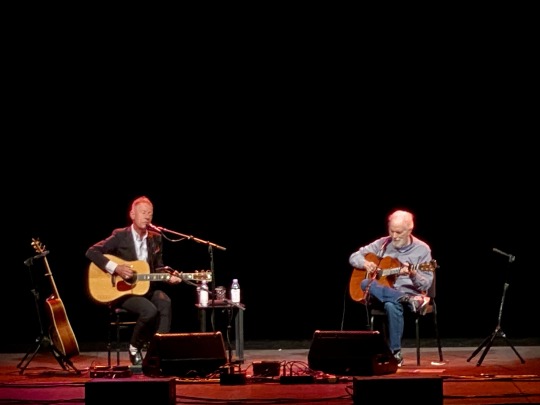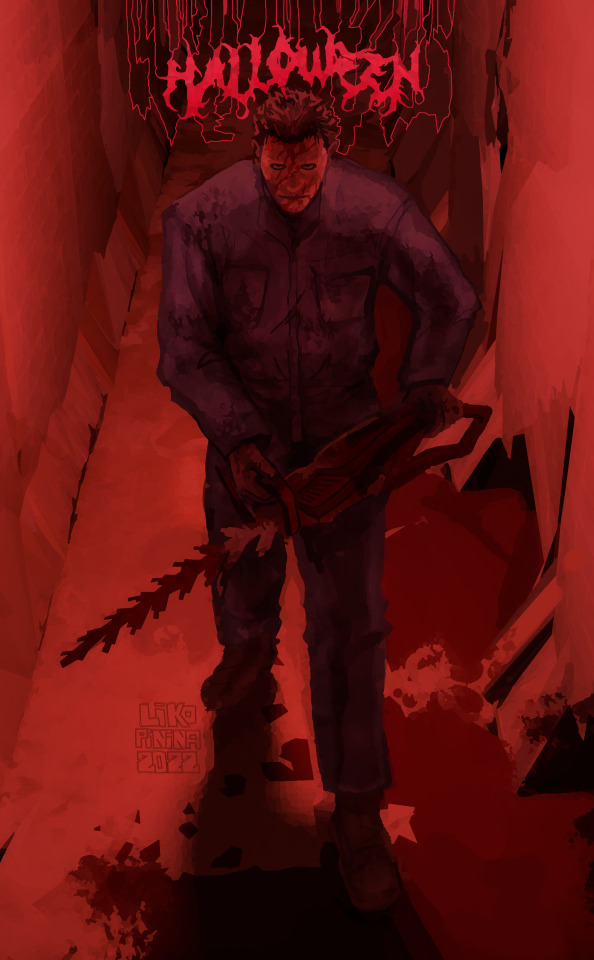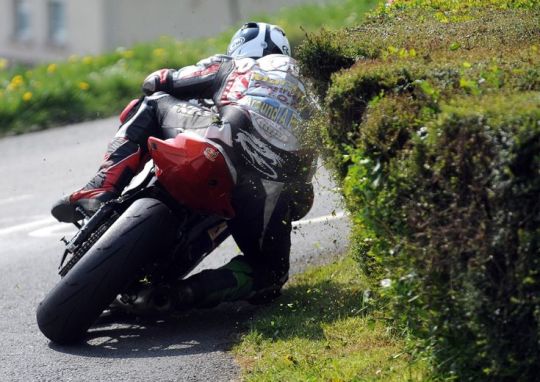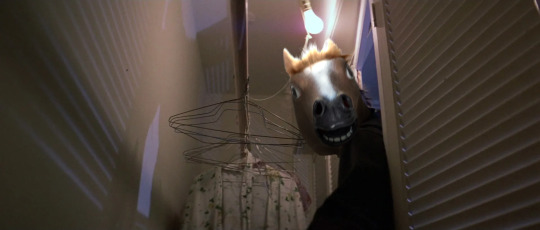#michael hedges
Photo

Michael Hedges (American, b. 1976), The Laughing Wind, 2020. Oil on canvas, 162.6 × 132.1 cm
101 notes
·
View notes
Text
this album
1 note
·
View note
Video
youtube
Michael was a master of The Harp Guitar.
Be careful- put a pillow under your jaw before listening to this.
8 notes
·
View notes
Video
youtube
there must be some kinda way out of here
said the joker to the thief
7 notes
·
View notes
Text
youtube
Michael Hedges
Ursa Major
A Winter's Solstice VI - (Windham Hill Records)
1997
#michael hedges#ursa major#a winter's solstice vi#90s music#music#instrumental#guitar#new age#acoustic guitar#wind#Youtube#windham hill records
0 notes
Text

Lyle Lovett and Leo Kottke at Midland Theatre, Newark, Ohio, Oct. 28, 2023
Dressed casually in jeans, Leo Kottke was talkative, gut-bustingly funny and similarly loquacious on guitar.
Donning dark formal wear sans tie, Lyle Lovett was more reserved - musically and otherwise - in joining Kottke in Conversation and Song, as their joint tour is dubbed, Oct. 28 at Newark’s Midland Theatre.
Talking about supermarkets, the laconic Lovett, speaking in his smooth Texas drawl, said his wife won’t say Piggly Wiggy; she calls it “that store.”
“I don’t like Come and Go,” Kottke shot back in his gravely baritone.
On it went for two hours, 10 minutes as the friends, colleagues and veritable opposites attracted a large crowd that ended the evening on its collective feet after Lovett and Kottke encored with the former’s “Church,” one of two songs the pair played together (Lovett’s “She’s No Lady” was the other) with Kottke’s low voice and fast-fingered fretting paired beautifully with Lovett’s higher, raspier, croon and simpler guitar style.
This is no knock. Virtually every guitarist plays with less complexity than Kottke.
He’s a band of one who transformed his six-string into an aural six-piece as he played “Twice,” from his partnership with Phish’s Mike Gordon; sung of love almost consummated on “Julie’s House;” and nodded to his heroes - Derek Trucks and Michael Hedges were among the names Kottke dropped throughout the evening - on John Fahey’s “The Last Stream Engine Train.” All told, Kottke offered seven majority instrumental songs that saw him employing slide, fingerpicking, harmonics, feedback and other devices to create the sounds Lovett accurately described as “perfect.”
“What came immediately after the steam engine?” Lovett asked his on-stage compatriot following Fahey’s number.
“A Plymouth,” Kottke replied.
For his part, Lovett played nine tunes, mixing such far-flung covers as Tammy Wynette’s “Stand by Your Man” and Guy Clark’s “Texas - 1947” with self-written fan favorites including “12th of June” and “Pony on My Boat.” And when Lovett performed “Ain’t it Something” after a particularly long-winded, circuitous and hilarious monologue from Kottke, during which he declared nothing is more frightening than happiness and freedom, Lovett explained the selection by saying: “That was the only song I could think of to support your story.”

Kottke couldn’t have been surprised.
“Non-sequiturs don’t faze me,” he said later in the evening.
Grade card: Lyle Lovett and Leo Kottke at Midland Theatre - 10/28/23 - A
10/29/23
#lyle lovett#leo kottke#2023 concerts#john fahey#derek trucks#michael hedges#mike gordon#phish#tammy wynette#guy clark
1 note
·
View note
Video
youtube
Aerial Boundaries Michael Hedges
0 notes
Text
Listed: Buck Curran

Steel strings course through Buck Curran’s blood: he is both a guitarist and a luthier. Rising to prominence in the northeastern American psychedelic folk scene, first with his band Arborea and then solo, Curran is steeped in his country’s blues-influenced folk heritage. Recently, he performed an about-face and released Delights and Dangers of Ambiguity, a collection of improvisations that he describes as “improvised dissertations on dissonance & sustain (experimental, drone and modal explorations for piano and guitar).” In his review of the album, Bryon Hayes noticed that “there is a tie that binds these tunes to Curran’s overall oeuvre: a focus on resonance. Throughout his career, [he] explores ways of extending a note’s sonic envelope via extended techniques.” Curran also recently compiled a 22-track tribute to Steffan-Basho Junghans, which Jennifer Kelly reviewed here.
For this Listed, Curran runs down some recordings and writings from which he draws inspiration for his sonic explorations.
Blind Willie Johnson — Dark Was the Night Cold Was the Ground (1927)
youtube
I believe this is one of the most important recordings ever made, and there is a great reason why this recording made it onboard the space probe Voyager 1. I imagine it now: Blind Willie Johnson's deep plaintive voice and haunting slide playing on an endless loop as it hurtles out into the open void of deep space; a memory carried on a tiny metal seed...used as a kind of beacon of hope and promise for all life on earth. For certain it represents (along with folk music from Japan, the Navajo tribe, Bach, Beethoven, etc.) significant music made by the human race. The recording echoes the eternal loneliness that is such a big part of human nature and of our thoughts towards the silence and darkness of the cosmos itself. But in its moaning sadness, I feel it yearns always as a steady glowing light of hope.
The Wikipedia entry says this about the song: In 1977, Carl Sagan and other researchers collected sounds and images from planet Earth to send on Voyager 1 and Voyager 2. The Voyager Golden Record includes recordings of frogs, crickets, volcanoes, a human heartbeat, laughter, greetings in 55 languages, and 27 pieces of music. "Dark Was the Night, Cold Was the Ground" was included, according to Timothy Ferris, because “Johnson’s song concerns a situation he faced many times: nightfall with no place to sleep. Since humans appeared on Earth, the shroud of night has yet to fall without touching a man or woman in the same plight.”
Sinead O'Connor — The Lion and The Cobra (1987)
youtube
Sinead has been an inspiration for most of my life. In the late 1990s, I was fortunate to see her perform outdoors in Portland, Oregon. I stood in the front next to the barricade and her voice was just otherworldly: intense, emotional, and visceral in a way I've never heard before. It was powerful and transformational, and the siren-like timbres physically penetrated my body. She wrote and recorded these songs as a young woman pregnant with her first child. Songs like “Jackie” and “Troy” embody the spirit of the album and sound the many internal and external struggles of life.
Camaron de la Isla — Seguiriyas (circa 1980s)
youtube
Camaron de la Isla is one of my very favorite singers. His work with both Paco Delucia and Tomatito is essential listening. This film of Camaron singing a Seguiriya is so incredibly emotive and beautiful and cuts straight to my heart giving me such joy. As described here, a “Seguiriya” is one of the oldest flamenco styles. The oldest evidence of this flamenco style is found in the late 18th century, even though its origin is still uncertain. “Seguiriya” derived from primitive “tonás,” being created between Seville and Cadiz, los Puertos, Jerez and Triana neighborhoods. As singing, it has a tragic and gloomy character, enclosing the main values of what is known as “cante hondo.” Lyrics are painful, tragic, about human relationships, love, and death.
Pandit Nikhil Banerjee — Raga Chandra Kaushiki: Live at Dover Lane Music Conference, Kolkata (1977)
youtube
This deeply passionate performance by sitarist Pandit Nikhil Banerjee simply transcends time and space, and shimmers with the radiance of the Cosmos. Banerjee is among the best musicians I have ever heard. His tone is sweet and incredibly emotive. His technique absolutely masterful. He is accompanied on tablas by the Great Ustad Zakir Hussain.
Cinder Well — Live at Abbeydale Picture House (Songs from the album 'No Summer' 2020)
youtube
Along with the Gillian Welch albums Hell Among the Yearlings and Time (The Revelator) as well as various albums by Sandy Denny, June Tabor, and Karen Dalton, Amelia Baker's album No Summer is listed among my very favorite contemporary folk albums. This plaintive and beautiful live session features songs from No Summer. This session was perfectly documented (audio as well as video) in a historic movie house in Sheffield, England. During the songs “Old Enough” and “From Behind the Curtain,” Amelia is subtly and beautifully accompanied by Jim Ghedi and GBH.
Robbie Basho — Zarthus (1974)
youtube
My favorite album made by Robbie Basho. Thematically, it was deeply influenced by his spiritual guru Meher Baba and his fascination and love for Persian culture. Highlights on this album include his playing on 12 string guitar and piano. “Kahlil Gibran” is among my favorite of Basho’s songs that features him singing. I also highly recommend listening to Basho’s “Lost Lagoon Suite” from Falconer's Arm II (1967) and the album Song of the Stallion (1971).
Dylan Thomas — Deaths and Entrances (1946)

Deaths and Entrances is a volume of poetry by Dylan Thomas, first published in 1946. Many of the poems in this collection deal with the effects of World War II, which had ended only a year earlier. I first discovered Dylan Thomas’ poetry as a teenager when reading the anthology of poetry Immortal Poems. Along with the books Ariel by Sylvia Plath, and various poems by John Keats, Dylan’s poetry seems to transcend written word and takes me to another place.
Martin Simpson — Leaves of Life (1989)
youtube
The first acoustic guitar instrumental record that made a huge impact on me. Martin creates a dynamic world of sound with his virtuosity and the use of several unique and responsive hand-built acoustic guitars. Leaves of Life is an album of instrumental guitar arrangements of traditional ballads from the British Isles, many of which he learned from vocal airs. It’s an album that’s steeped in a dark, mysterious mood, and songs like “Green Fields of America” are otherworldly. His slide playing and command over the dynamics of single-note passages (and use of guitar overtones) are a great influence on my playing. The complex voices of the guitars he used on this album influenced me to build my own acoustic guitars.
Michael Hedges — The Naked Stalk (1991)
youtube
Michael Hedges was a true innovator of the acoustic guitar. “The Naked Stalk” is a deeply contemplative and beautiful piece of music, and along with his guitar instrumental “The Happy Couple” (from the Breakfast in the Field album, released in 1981), it is one of my very favorite guitar recordings.
Tommy Jarrell and Fred Cockerham — Live (1971, filmed by Blanton Owen)
youtube
I love the primordial American folk music from Round Peak, North Carolina. I hear the roots of Scotland and Ireland in this music and it moves me deeply. Tommy Jarrell and Fred Cockerham were among the finest players in this genre, and this intimate concert (filmed on Cockerham's front porch in Low Gap, North Carolina) is a vital and amazing archive. Also of interest is Cockerham’s fretless banjo made by fellow musician Kyle Creed. The fretless fretboard of this banjo was made with a sheet of Formica. This banjo now resides in the Smithsonian National Museum of American History.
Neil Young — In Concert at BBC (1971)
youtube
I absolutely love Neil Young’s live solo recordings. This live BBC concert from 1971 is a perfect example of the magic that can be made with just a handful of songs, voice and acoustic guitar. Other brilliant recordings performed in this fashion include Live at Massey Hall 1971 and Carnegie Hall 1970. All are favorite recordings that are utterly perfect. Neil Young, along with Bert Jansch and Tim Buckley (especially Goodbye and Hellofrom 1967), exists artistically in a realm that has inspired and influenced my own music. “Don't Let it Bring You Down” is my favorite Neil Young song, and I love his performance of it in this session.
#dusted magazine#listed#buck curran#blind willie johnson#sinead o'connor#camaron de la isla#pandit nikhil banerjee#cinder well#amelia baker#robbie basho#dylan thomas#martin simpson#michael hedges#tommy jarrell#fred cockerham#neil young
0 notes
Video
youtube
Michael Hedges covers "Love Bizarre"
Just bopping around the internet, stumbled on this one, one of my favorites from 30-odd years ago.
0 notes
Photo

Michael Hedges (American, b. 1976), Waiting on the Summer Rain, 2020. Oil on canvas, 40 x 50 in.
58 notes
·
View notes
Text
youtube
Dolby podcast talking to the sound team behind the "Best Sound" Academy Awards shortlist — “Avatar: The Way of Water.”
“In the end, Avatar — visually — is such a complicated image. And I think the human brain can easily take that in and enjoy it. But we — delivering the sound of Avatar — have to work against that, because the human brain can look at all those beautiful visuals, but can't necessarily process a thousand different sonic notions. Really, we wanna simplify it and get the sound to speak to the story that we're trying to tell. And it's not part of the story, it doesn't belong in the track.”
#dolby#dobly#sound design#avatar#Christopher Boyes#Dick Bernstein#Michael Hedges#Gwendolyn Yates Whittle#dolby atmos#Youtube
0 notes
Text


"Halloween" in style of "Only God Forgives" or "Mandy" - prompt from @eukaliptol
seen some hedge trimmers recently.... extremely cool looking hardware. idk if optimal for murder but
#michael myers#fanart#my art#slasher horror#slashers#red#halloween franchise#halloween#hedge trimmer#only god forgives#nicolas winding refn#mandy 2018#panos cosmatos#blood tw#likoart#bg is my former basement corridor. it was a great basement. very atmospheric. i dont have a basement now :(#basementless
231 notes
·
View notes
Text

Michael Dunlop
Isle Of Man T.T.
#motorcycle#michael dunlop#motolegends#isle of man tt#pruning the hedges#road racing#road race#sport bike#racing#motorsports#moto love#lifestyle
10 notes
·
View notes
Text



happy day 1 of Halloween
#im just reposting this old ditty bc i dont like the hedge one i made lmao#halloween#slashers#michael myers
5 notes
·
View notes
